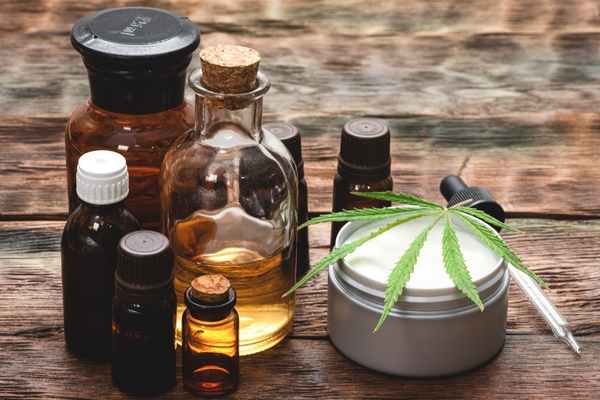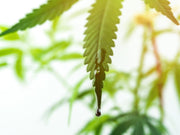Ever since CBD became legal with the Farm Bill of 2018, its popularity has exploded in the United States. It seems like CBD is being added to everything, but with so many products and brands out there, it begs the question - how is CBD made?
Because CBD products are often tinctures, gummies, or creams, it's harder to see the process by which growers and manufacturers extract and process this ingredient.
So, we're going to pull back the curtain and give you a firsthand look at the magic of CBD and how it can wind up in our products.

Step One: Seed Selection
Cannabis is a dioecious plant, meaning that it grows males and females. Males will pollinate the females to produce more seeds so the life cycle continues. This means that when growing regular hemp seeds, growers have to be careful to spot and cull the males so they don't fertilize the females. Otherwise, it's harder to extract CBD.
There are three types of seeds used for growing hemp: standard, feminized, and auto-flowering. Here's a breakdown of each type.
- Standard Seeds - Each seed has a 50/50 chance of being a male or female, so growers must be vigilant and check every plant during the growth cycle.
- Feminized Seeds - These seeds are entirely female, meaning the grower doesn't have to remove half of their crops to prevent fertilization.
- Auto-Flowering Seeds - Auto-flowering plants grow and mature faster, speeding up the harvest. However, they don't produce as much CBD, so growers need to plant more of them.
In addition to the types of seeds used, CBD farms must also choose a specific type of hemp plant. Since hemp can be grown for seeds, fibers, or CBD, there are several varieties. CBD-infused hemp is smaller and bushier than other varieties, making it resemble regular THC-laden cannabis.

Step Two: Growing Hemp
According to the 2018 Farm Bill, hemp is legal in the US as long as it contains less than 0.3 percent THC. Unfortunately, although hemp has little THC, it's relatively easy for a crop to become too potent, making it "hot" and illegal to harvest and sell. The problem lies with the fact that growers want each plant to produce as much CBD as possible, but with more CBD comes more THC.
On average, it can take about 100 to 120 days for hemp plants to mature, but this guideline can shift and change based on a variety of factors, including weather, pest control, watering methods, and more.
Hemp thrives in warm and relatively humid environments, making it an ideal outdoor crop. However, many growers choose to grow their plants inside because it's easier to control each variable and ensure more potent flowers. That said, one of the advantages of growing hemp outside is that farmers can use mechanized equipment to speed up the harvesting process and cut down on labor costs.

Step Three: Harvesting, Drying, and Curing
One of the trickiest parts of hemp production and CBD cultivation is knowing when to harvest. On the one hand, growers want to wait as long as possible to ensure a higher concentration of CBD. On the other hand, waiting too long could spoil the batch or cause the THC concentration to get too high, meaning the entire crop will go to waste.
Usually, growers will test their plants regularly to see how much CBD is present and to verify that the THC concentration is still within the legal limit. Testing the plants is the most reliable method, but growers can also tell when it's time to harvest based on the plant's trichomes. When they shift from clear to milky, it's time.
Drying hemp is a time-consuming process because growers can't rush it. Typically, drying works by hanging the plants in a room with lots of ventilation and lower humidity than what the plants are used to. Drying is crucial because if the plants dry out too fast, they'll yield low-quality CBD. Also, if the room is too humid, mildew can form, spoiling entire crops.

Step Four: CBD Extraction
Before extracting CBD from hemp, growers have to know what kind of CBD product they're producing. The options are:
- Full-Spectrum CBD - This option extracts all the ingredients from the plant, including trace amounts of THC.
- Broad-Spectrum CBD - This product is similar to full-spectrum but the THC is removed.
- CBD Isolate - Only cannabidiol is extracted from the plant, leaving everything else behind.
Since we at TruHarvest only offer full-spectrum CBD, we'll discuss how to extract these cannabinoids from the plant. There are a couple of methods, including:

Ethanol Extraction
Soaking hemp in ethanol is the most common practice for CBD extraction because it's the easiest and most cost-effective. First, the ethanol absorbs all the cannabinoids and other ingredients from the plant. Then, because ethanol evaporates quickly, manufacturers just have to leave the mixture out until all the alcohol is gone. What remains is full-spectrum CBD.
Propane or Butane Extraction
This method is similar to ethanol extraction, except growers use butane or propane instead of ethanol. However, because propane and butane are toxic for humans, growers have to make sure to remove all of the harmful compounds from the mixture before doing anything with the CBD.
CO2 Extraction
Pressurizing carbon dioxide puts it into a semi-liquid state, making it stable enough to extract CBD and other ingredients from the hemp plant. Then, once all the cannabinoids are extracted, growers can release the pressure and the carbon dioxide will evaporate very quickly. This method is also affordable and effective at producing high-quality full-spectrum CBD.

Get Your CBD Products From TruHarvest
From choosing the best seeds to harvesting plants with high levels of CBD, TruHarvest controls the process every step of the way. We're proud to provide the best CBD possible so our customers can appreciate its health benefits. Browse our product selection and experience the TruHarvest difference for yourself today!



